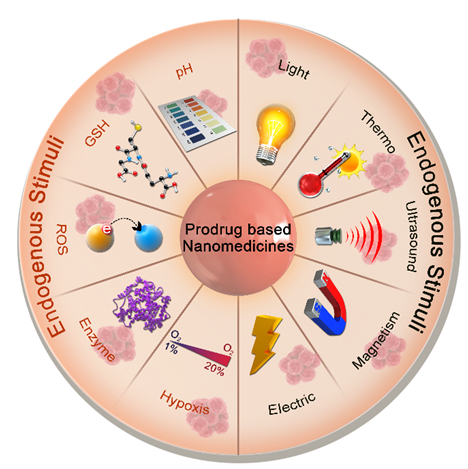Abstract
The rapid development of nanotechnology results in the emergence of nanomedicines, but the effective delivery of drugs to tumor sites remains a great challenge. Prodrug-based cancer nanomedicines thus emerge due to their unique advantages, including high drug load efficiency, reduced side effects, efficient targeting, and real-time controllability. A distinctive characteristic of prodrug-based nanomedicines is that they need to be activated by a stimulus or multi-stimulus to produce an anti-tumor effect. A better understanding of various responsive approaches could allow researchers to perceive the mechanism of prodrug-based nanomedicines effectively and further optimize their design strategy. In this review, we highlight the stimuli-responsive pathway including endogenous stimuli (e.g., pH, redox environment, enzymes and hypoxic, etc.) and exogenous stimuli (e.g., light, thermo, ultrasound, and magnetism field, etc.) of prodrug-based nanomedicines and their anticancer applications. Furthermore, various types of prodrug-based nanomedicines such asprodrug-based polymer conjugated nanomedicines, small molecular prodrug-based self-assembled nanomedicines, and prodrug-encapsulated nanomedicines are described. Also, recent progress and prospects of stimuli-responsive prodrug-based nanomedicines and patient data in the clinical application are summarized. Additionally, the current development and future challenges of prodrug-based nanomedicines are discussed. We expect that this review will be valuable for a broad range of readers to gain a deeper understanding of the structure and development of prodrug-based cancer nanomedicines to design rational and effective drugfor clinical use.

